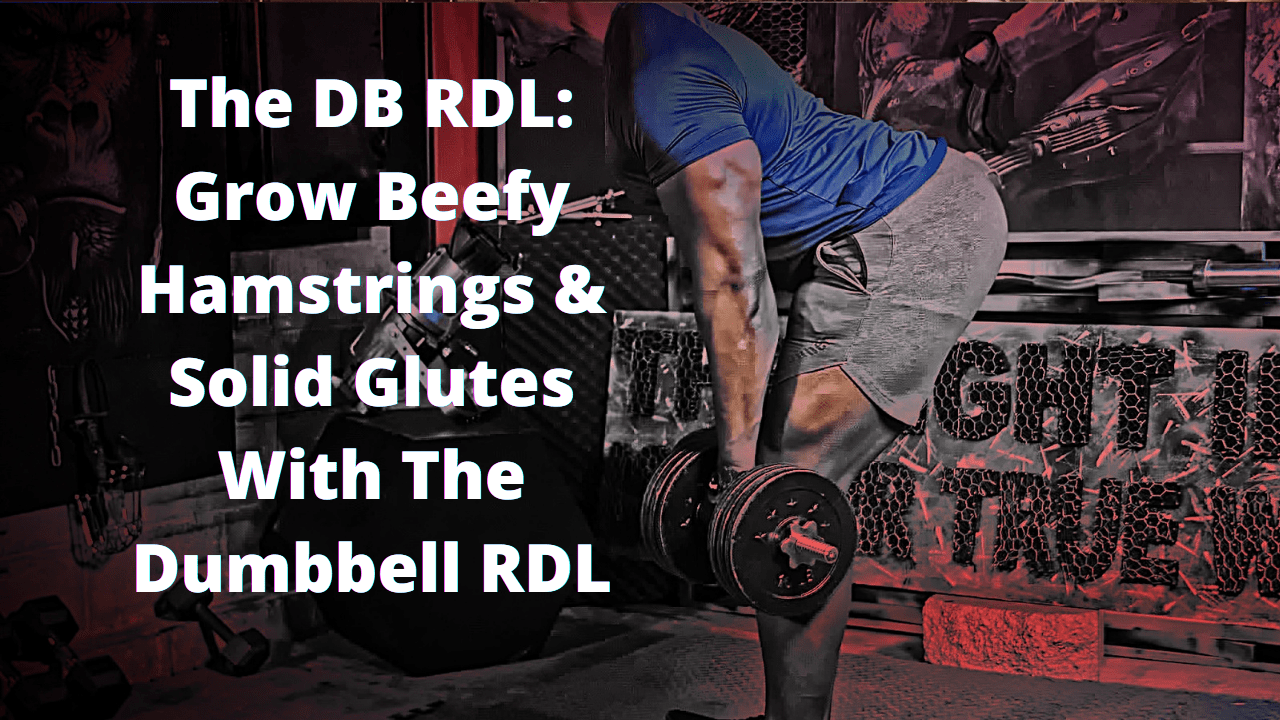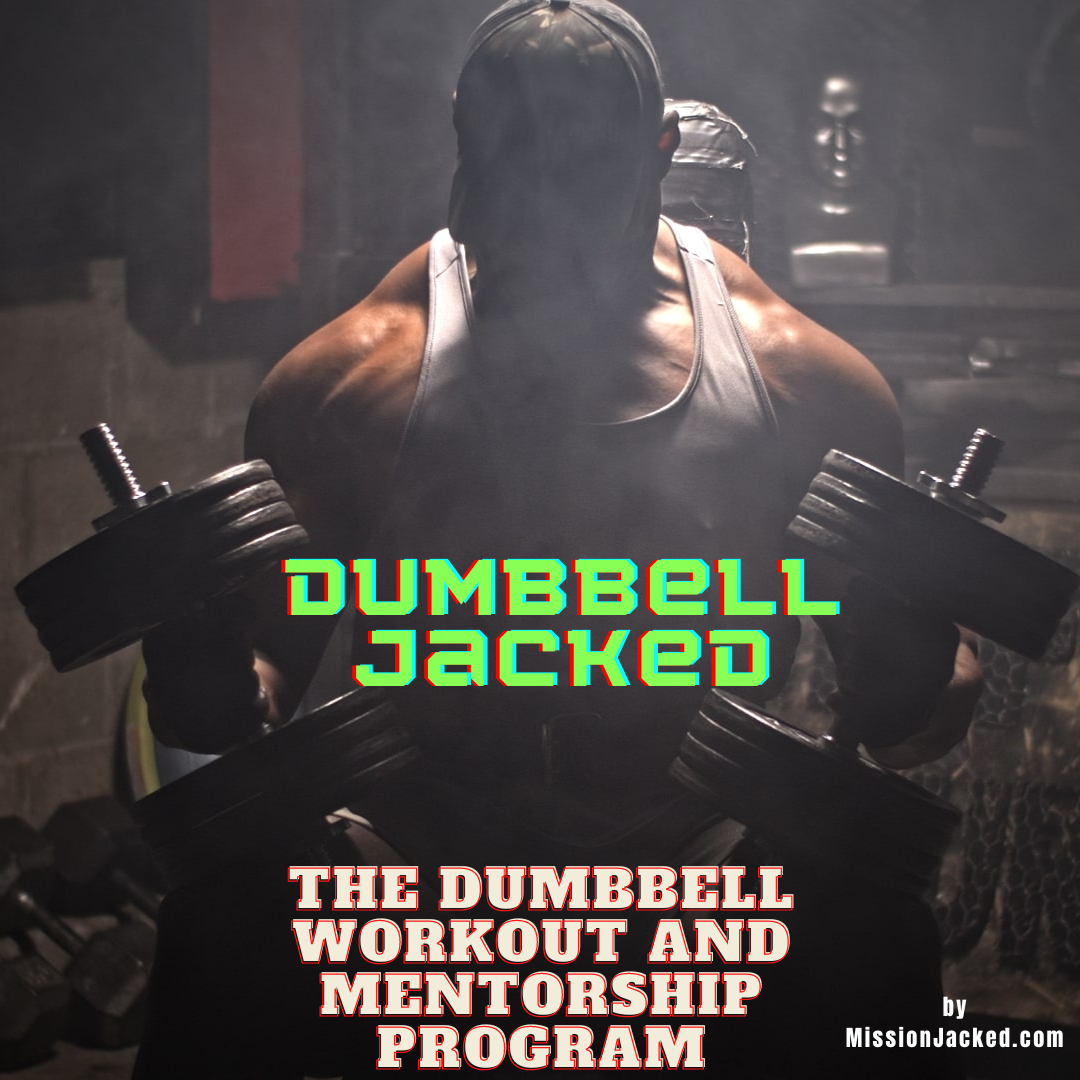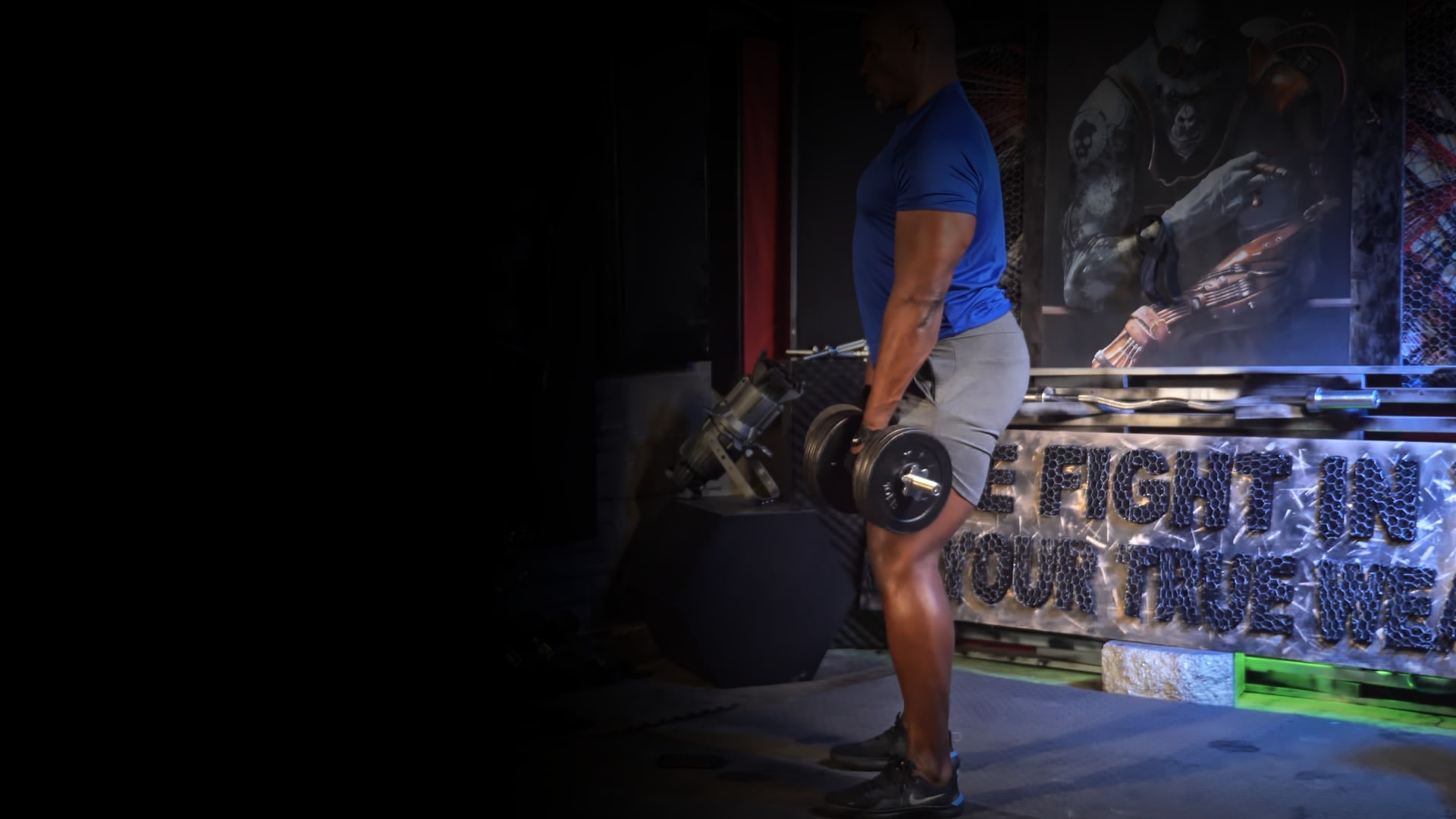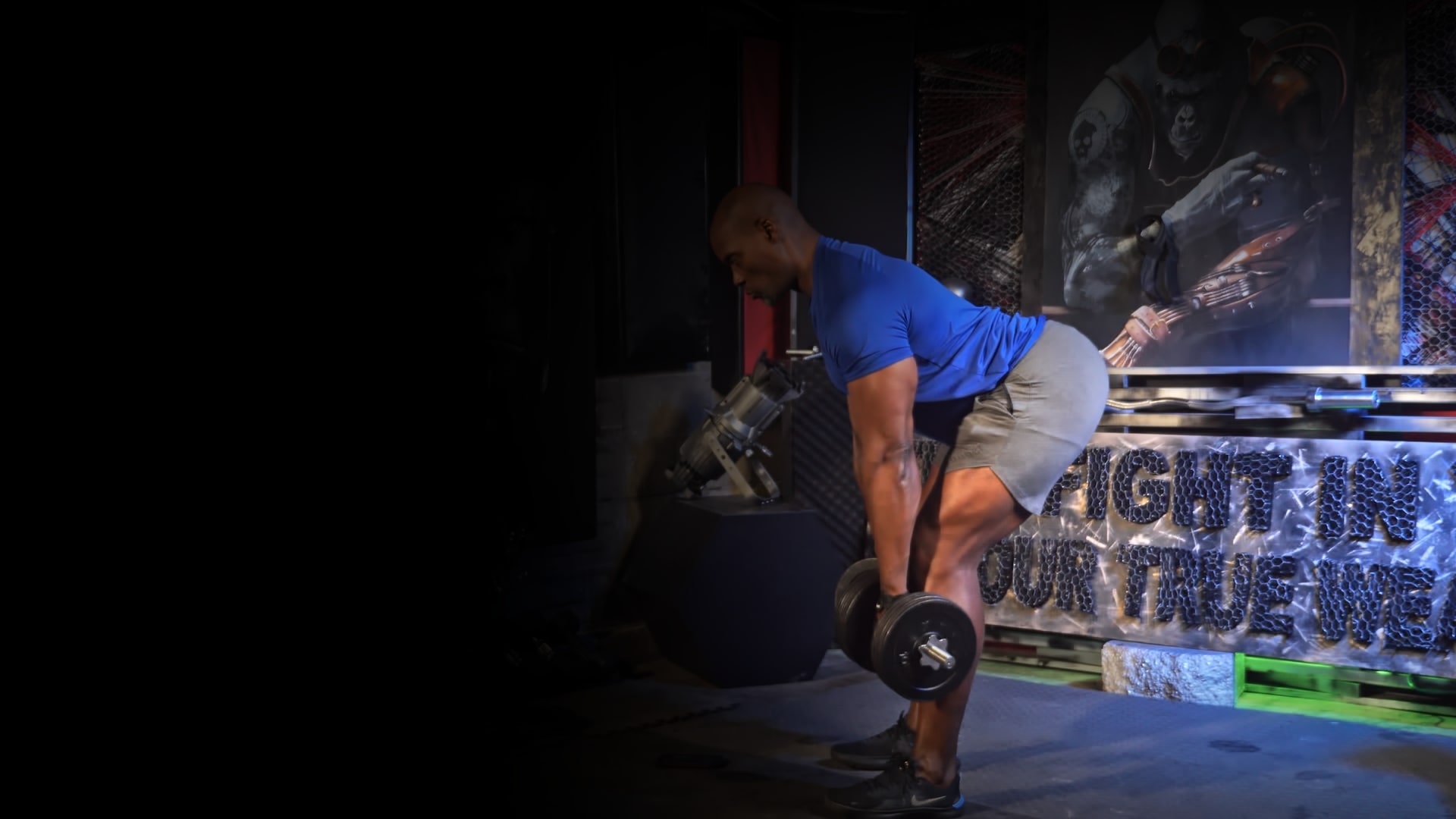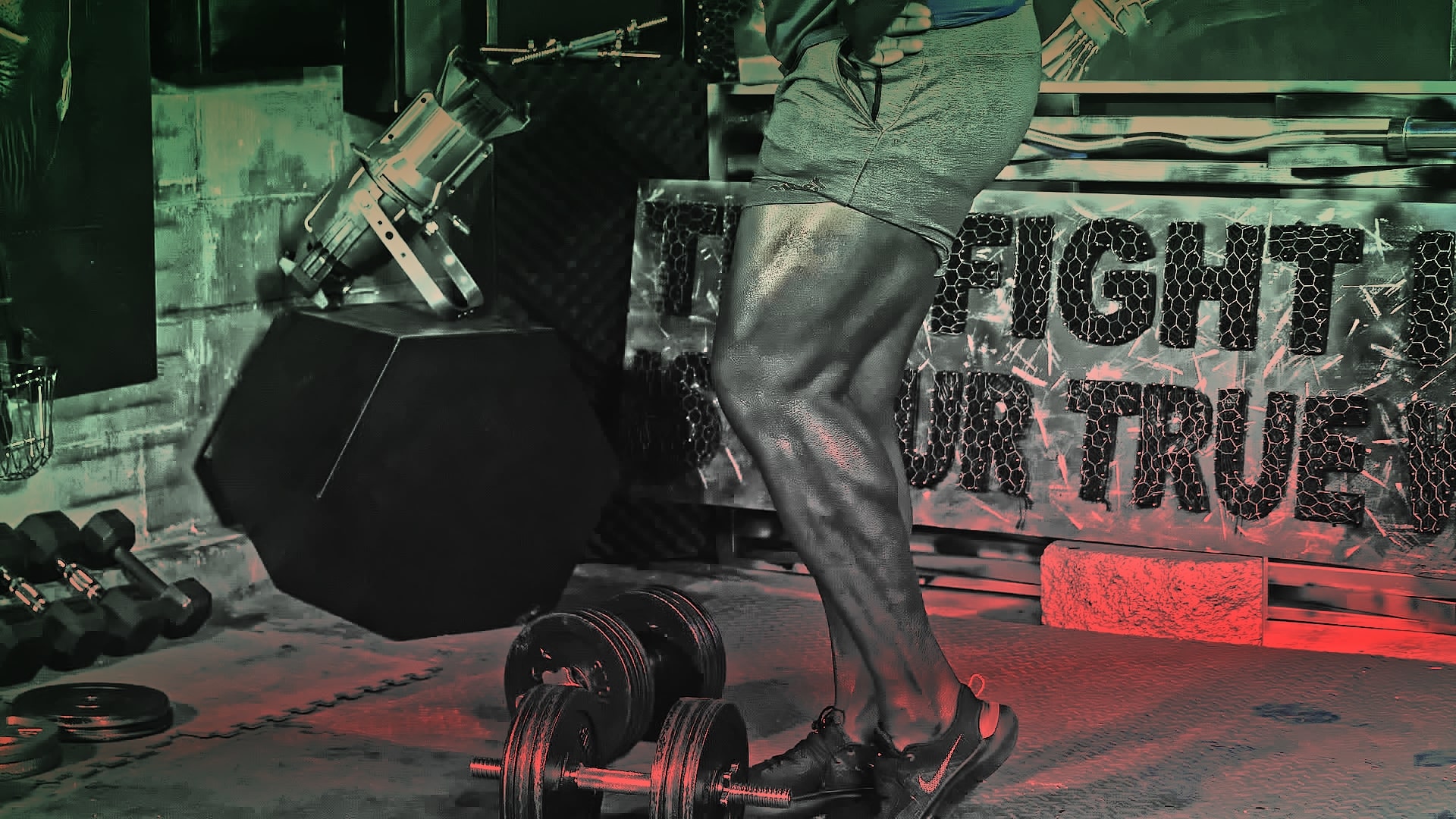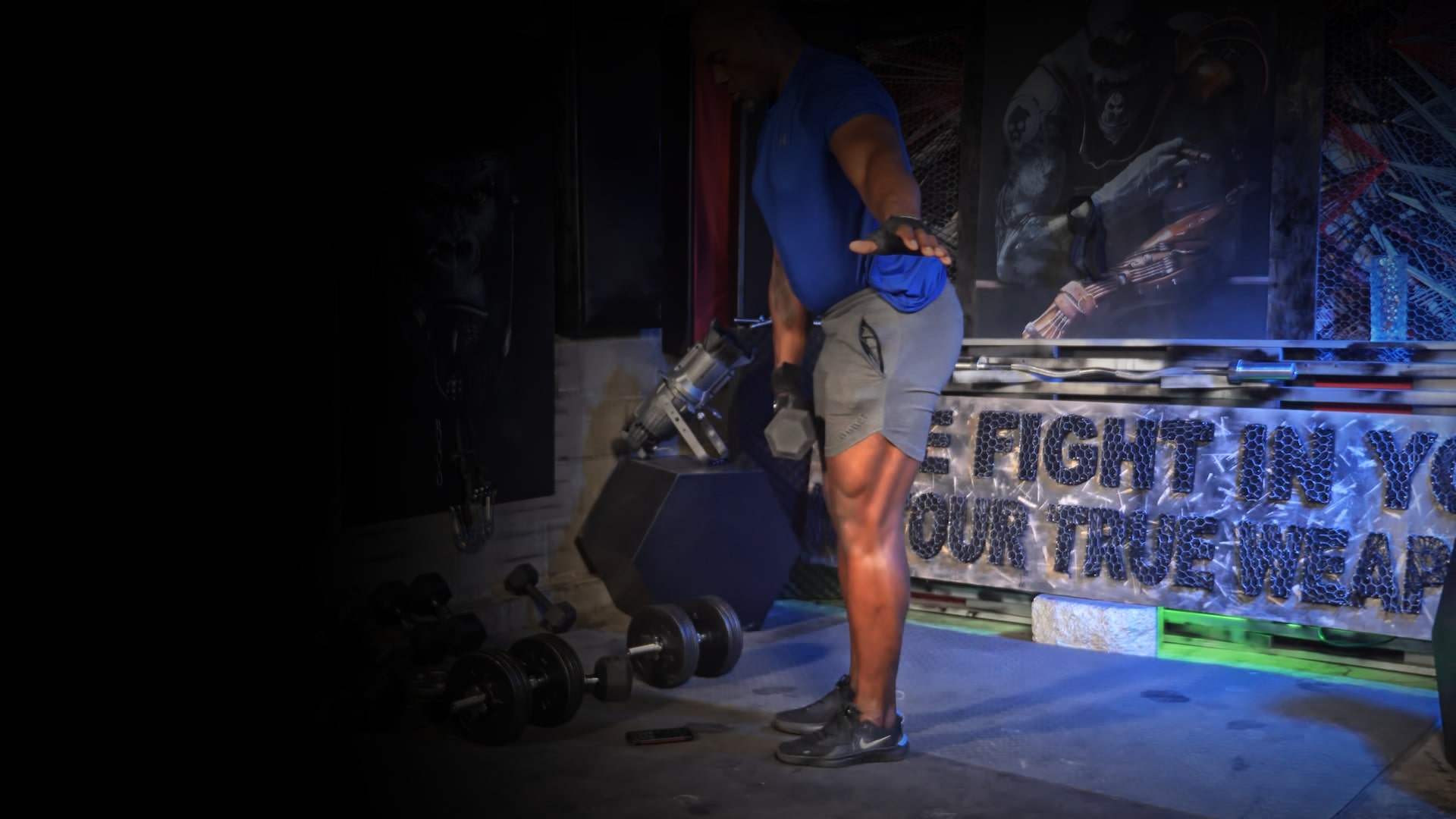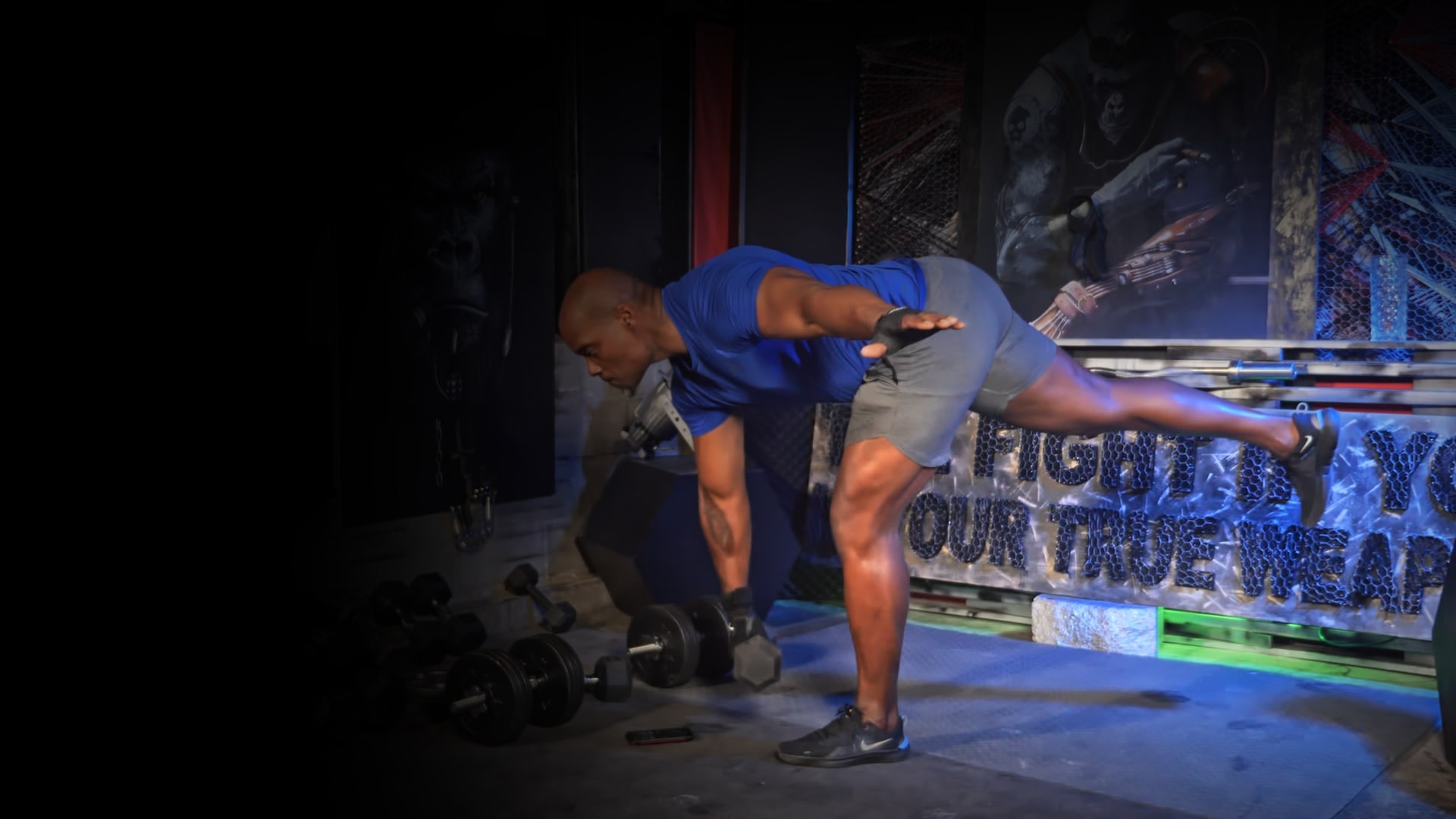Mission Jacked.com
The DB RDL:
Grow Beefy Hamstrings & Solid Glutes with the
Dumbbell RDL
The Dumbbell RDL Summary:
What Is The DB RDL Exercise?
The DB RDL, better known as the Dumbbell Romanian Deadlift is a member of the notorious deadlift family, but while it flies under the flag of a deadlift movement, it shouldn’t be confused with an actual deadlift. You can also do this hinge exercise with a Kettlebell or by doing a Barbell Romanian Deadlift. For today's master class, we will be concentrating solely on how to perform the Dumbbell Romanian version. We will touch on some variations that you can add to your lower body workouts regardless if you train for strength, bodybuilding, or fitness.
Scroll Down To Continue Reading This Hamstring Exercise Article
Related Articles:
Try This Dumbbell Hamstring Workout For Size
10 Dumbbell RDL Variations
The Top 15 Best Hamstring Dumbbell Exercises
Continue Reading This DB RDL Article
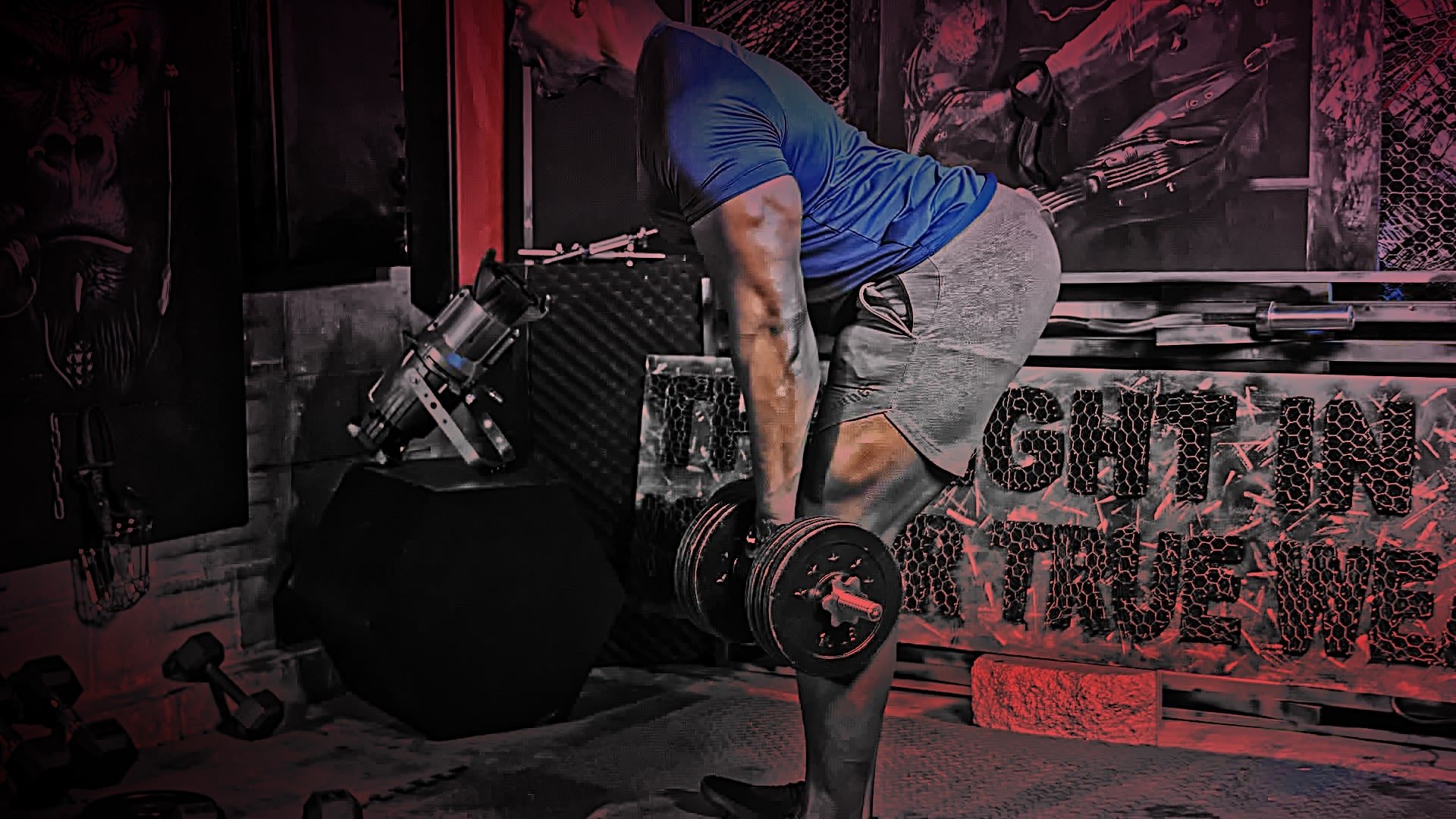
What Makes The Dumbbell RDL Different From The Conventional Deadlift?
Believe it or not, even though both the Romanian Deadlift and the standard Deadlift target similar muscle groups, they are different in execution.
• The RDL ( Romanian Deadlift) focuses on the Glutes and Hamstrings while the deadlift includes the Quad muscles.
• You start the Romanian Dumbbell Deadlift and any other variation of this exercise in the standing position or downward eccentric motion. You start deadlifts by pulling the weight off the ground using an upward concentric motion.
• With Deadlifts, you use knee and hip extension to push off the floor. With the Romanian Deadlift, the pull motion comes from the hips.
• With the Romanian Deadlift, the shoulders are placed much further forward, unlike with deadlifts where the shoulders are further back.
• Unlike the Deadlifts which start from the floor, the Romanian Deadlift starts in the standing position and uses the hips to hinge which means that to get full activation of the hamstring and glute muscles, you only need to hinge until the dumbbells are shin-height.
How To Do An RDL Using Dumbbells:
Items Needed: One pair of dumbbells.
Dumbbell RDL Form Guide:
Cue 1: You can start with the weight resting on a flat bench so that you don’t have to bend too far to pick them up. Pick up a dumbbell in each hand using a pronated grip. Have your feet shoulder-width apart and rest each dumbbell on the outer thigh.
Cue 2: Have each leg slightly bent at the knee and your body weight over your heels on each repetition.
Cue 3: Maintain a flat back with the spine in a neutral position. Ensure that you keep a high chest and then engage your core as well as your glutes and hamstrings. Retract your shoulders so that you can feel each dumbbell pulling down on your Lat muscles. This will help to keep the weight resting on each leg and stop the lower back from rounding.
Cue 4: To fully activate the Hamstrings, maintain a slight knee bend. Hinge at the hips by pushing your ass back instead of down as you would do with a deadlift. Lower each dumbbell until it is level with your shins.
Cue 5: To maintain strength, drive your hips forward and up to the top without extending and locking out the knees. Squeeze your Glutes like they owe you money.
This is how you perform the DB RDL Exercise.
Mistakes to Avoid When Doing the DB RDL Exercise:
Here are 3 Mistakes to Avoid When Performing the DB RDL Exercise.
1: One of the most common mistakes is locking the knee. When you lock the knee, you can place unwanted stress on the lower back and cause injury.
2: Without even realizing it, you can encourage rounding in the mid and lower back and cause injury by not keeping the weight resting on your thigh, your shoulders retracted, your chest high, and your core engaged. Over time you end up not being able to generate strength in the areas that matter.
3: Another common mistake is going too far down as if you were performing a deadlift. To avoid this, you will need to concentrate on hinging at the hips by pushing back with the glutes rather than lower down.
Muscles Worked With the RDL DB:
When it comes to the strength and fitness of the posterior chain, using the RDL exercise movement can have great rollover effects on improving strength in other compound movements.
The Hamstrings:
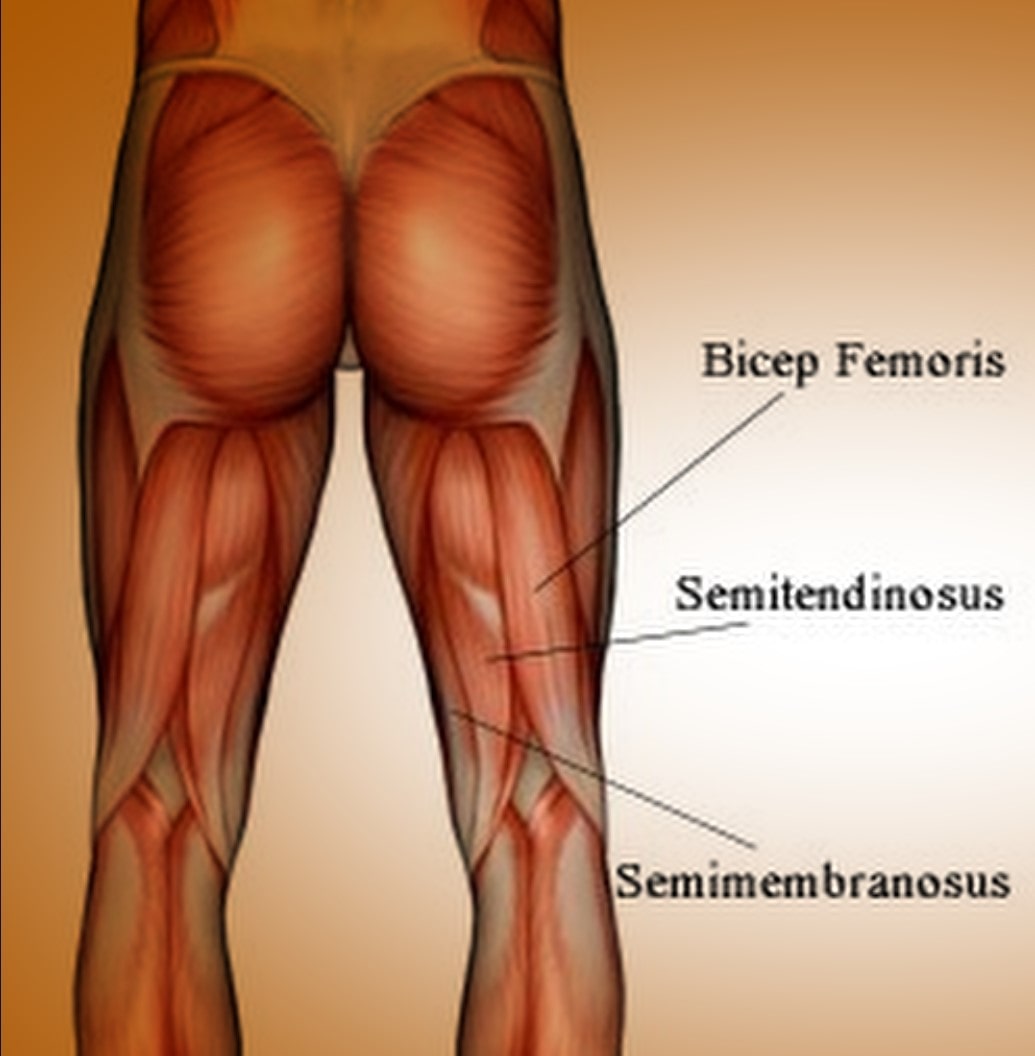
With flexed knees, and each leg remaining slightly bent means that this exercise targets all four muscles that make up the hamstrings including the two muscles of the Bicep Femoris, the semimembranosus, and the semitendinosus. By focusing on loading the muscle during the lowering portion of the movement, you can achieve more Hamstring activation.
The Back & Glutes:
This exercise directs large amounts of stress to the gluteus region since it is a hip-hinging movement. To further enhance glute activity, it is best to always tense the glutes at the top of the exercise.
Even though the lower back gets good work during every repetition, the aim isn't to make the lower back feel as if it has to work just as hard as the hamstrings. If this area does feel overworked after a set, check your execution as you may not be hinging fully at the hips or pushing the ass back enough. it could also be a problem with you lowering the weights too far. This can make the exercise feel more like a deadlift instead of an rdl movement.
Upper Back
For best results and the health of your body, ensure that the torso remains rigid, the back stays flat, the chest is high and the shoulders are pulled back during the movement. By doing this, your upper back muscles will help to counterattack spinal flexion.
The Trapezius Adds Stability:
The Traps are involved to help stop the torso and shoulders from rounding while adding more stability.
The Benefit of the RDL with Dumbbells:
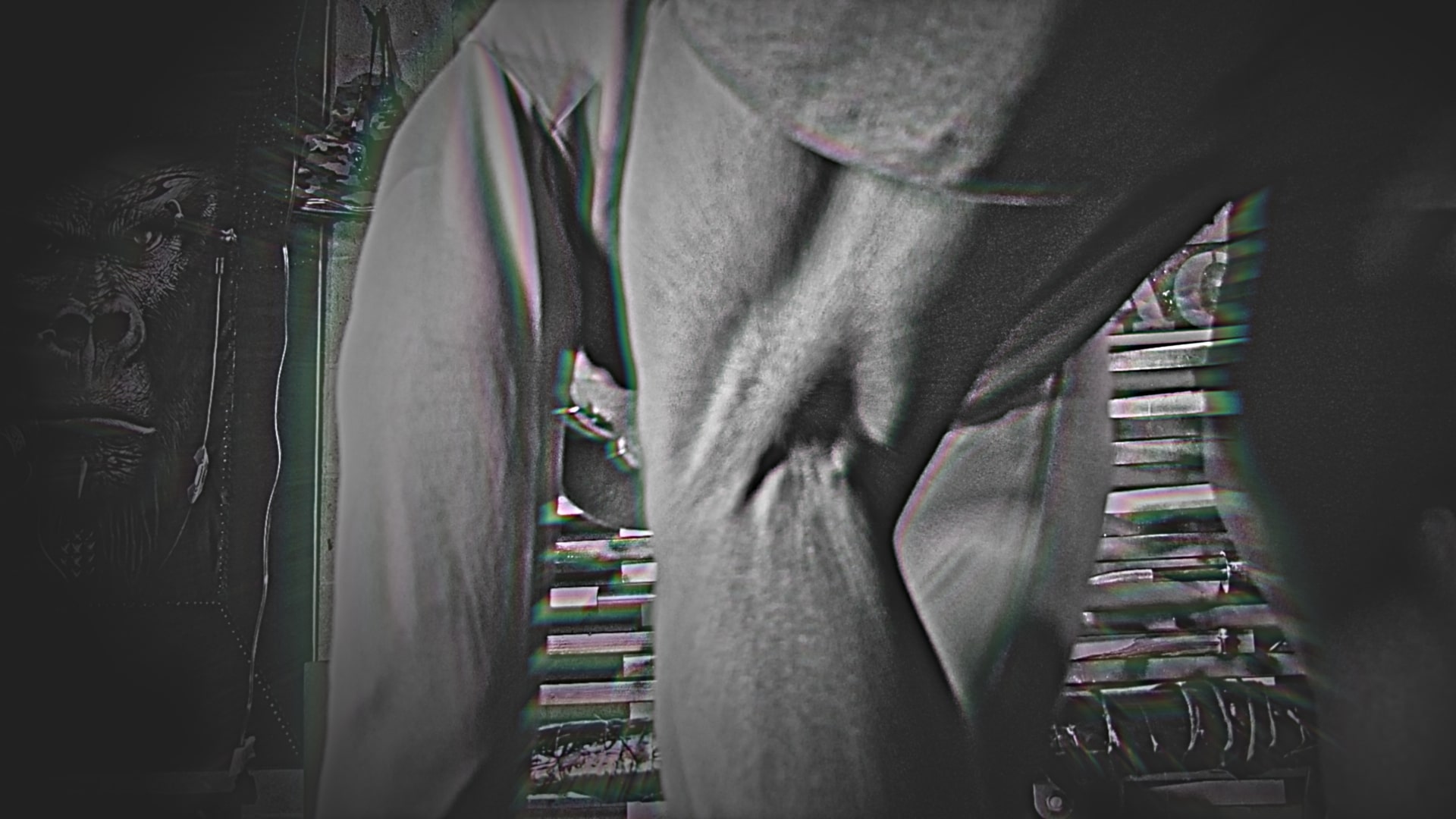
The Barbell rdl can be especially hard for athletes that have tight hamstrings, glutes, or flexibility issues because of the range of motion required. The rdl with dumbbells makes it easier due to the weight not being fixed in one position.
Romanian Deadlift Variations:
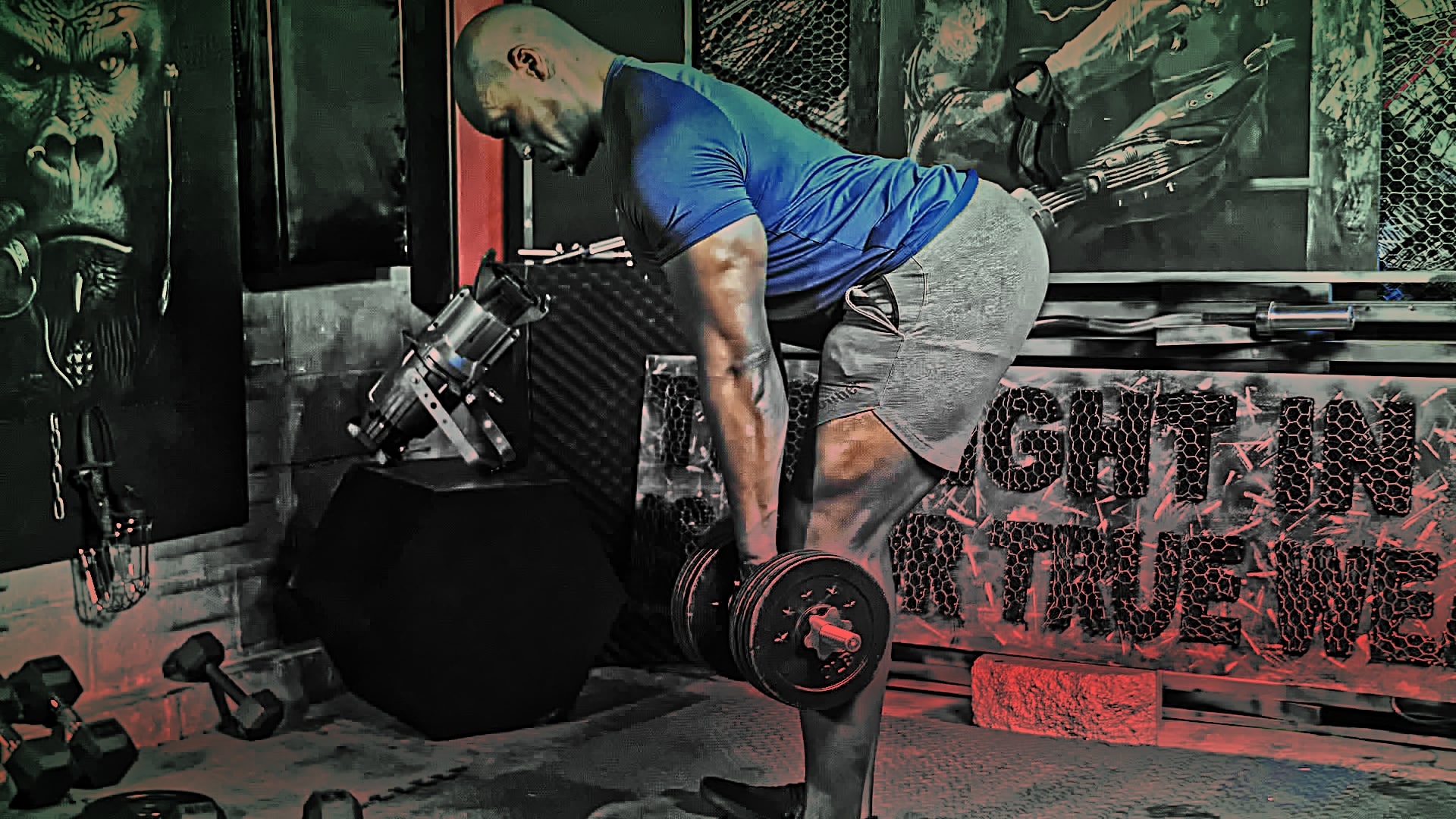 Romanian Deadlift Variations
Romanian Deadlift VariationsNow we’ve gone over the cues for the rdl, it's time to add some Romanian Deadlift variations to your workout.
The Contralateral Single-leg Dumbbell RDL:
The Single-leg Romanian Deadlift with contralateral loading will test your balance, strength, and stability. The added contralateral element will place more stress on the core as it works to keep the body from over-rotating.
Items Needed: One Dumbbell
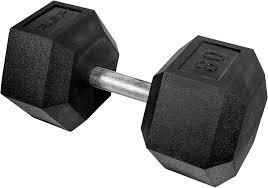
Single-Leg Dumbbell RDL Form Guide:
Cue 1: Choose the leg you wish to work on first. (Tip: Always start with your weakest leg first.)
Cue 2: If you start with your left leg, place the dumbbell in your right hand.
Cue 3: Stand with your body square-on, and keep a high chest and an engaged core. Bend slightly at the knee.
Cue 4: Use your left arm as a balance tool. Lightly lift your right foot off the floor as you start to push back with your Glutes and hinge at the hips.
Cue 5: Keep your right leg straight as you let it travel behind you, making sure not to twist your body as you maintain your balance. At the same time, lower the dumbbell to the level of your shin.
Cue 6: Pause briefly before slowly returning to the start of the exercise. Repeat for the set amount of repetitions before working the right leg.
Toes Up RDL:
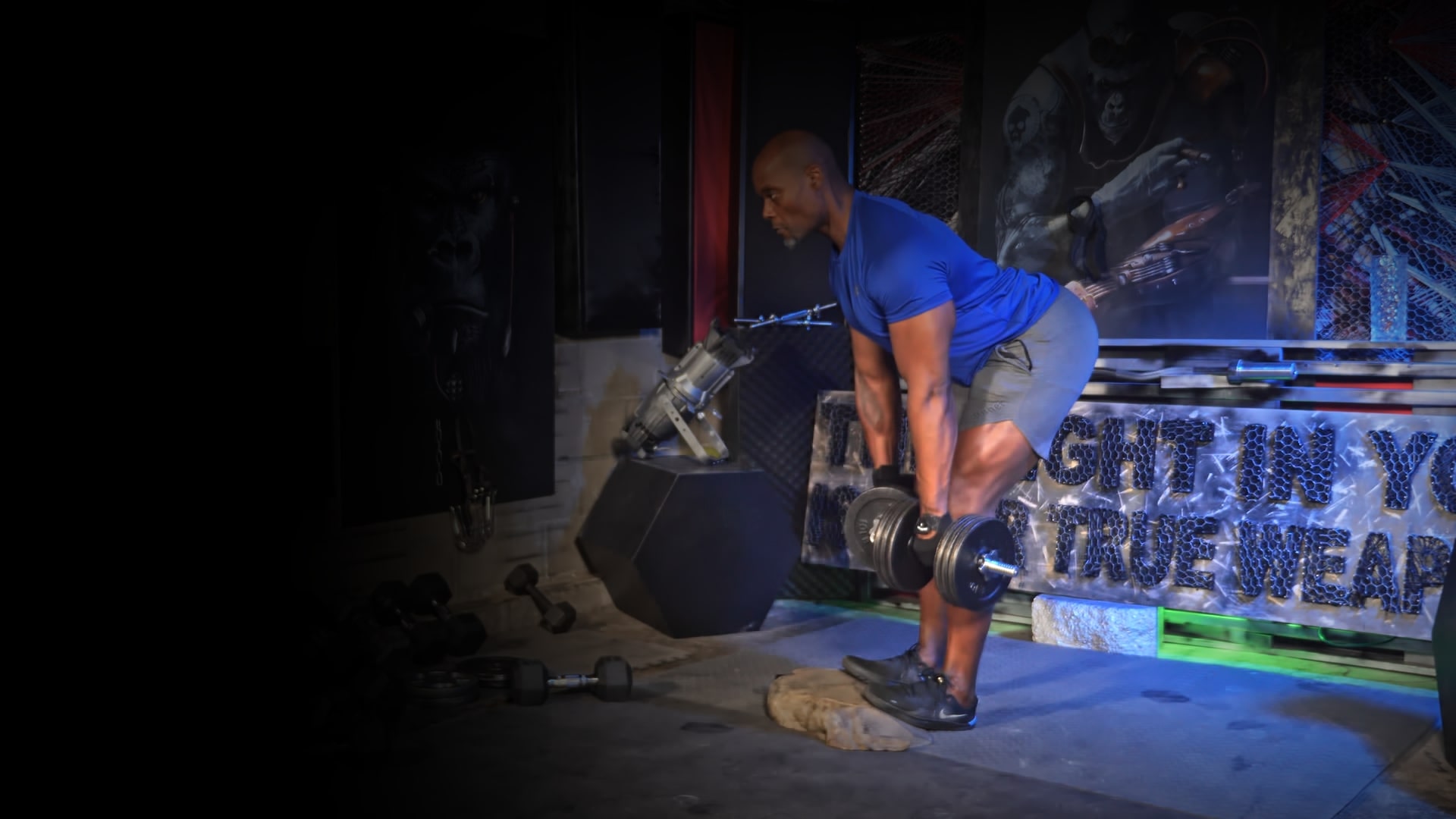
If you have problems with the standard dumbbell RDL, this Romanian Deadlift variation is a great tool for helping you to iron out the wrinkles when it comes to form and execution. Having your toes up during the exercise forces you to place your body weight on your heels and helps you to create a better hinge at the hips. As your toes are up and heel down performing this Dumbbell Romanian Deadlift, you must lower down slowly so as not to lose your balance.
Items Needed: One pair of dumbbells and two bumper plates or a sloped platform.
The Set-up: Place the bumper plates next to each other on the floor. Rest your toes on the edge of each bumper plate and push your heels into the ground. Have your feet set shoulder-width apart.
Toes Up Dumbbell RDL Form Guide:
Cue 1: You can start with the dumbbells resting on a flat bench so that you don’t have to bend too far to pick them up. Pick up a dumbbell in each hand using a pronated grip.
Cue 2: Have each leg bent slightly at the knee and your body weight over your heels.
Cue 3: Maintain a flat back with the spine in a neutral position. Ensure that you keep a high chest and then engage your core, your glutes and hamstrings. Retract your shoulders so that you can feel each dumbbell pulling down on your Lat muscles. This will help to keep the weight resting on each leg and stop the lower back from rounding.
Cue 4: To fully activate the muscles in the back of each leg, maintain a slight knee bend. Hinge at the hips by pushing your ass back instead of down as you would do performing a deadlift. Lower each dumbbell until it is level with your shins.
Cue 5: To maintain strength, drive your hips forward and up to the top without extending and locking out the knees. Squeeze your Glutes like they owe you money.
The Toe-Up RDL With Dumbbells is a fine alternative for the Stiff Leg Deadlift.
An Advanced Dumbbell Romanian Exercise:
A great time-saving RDL workout is to combine the standard DB RDL with an exercise such as a Dumbbell Squat. You do this by alternating between the two exercises in one set. This is called an In-Set Superset, designed to increase workout intensity.
RDL Into Dumbbell Squat:
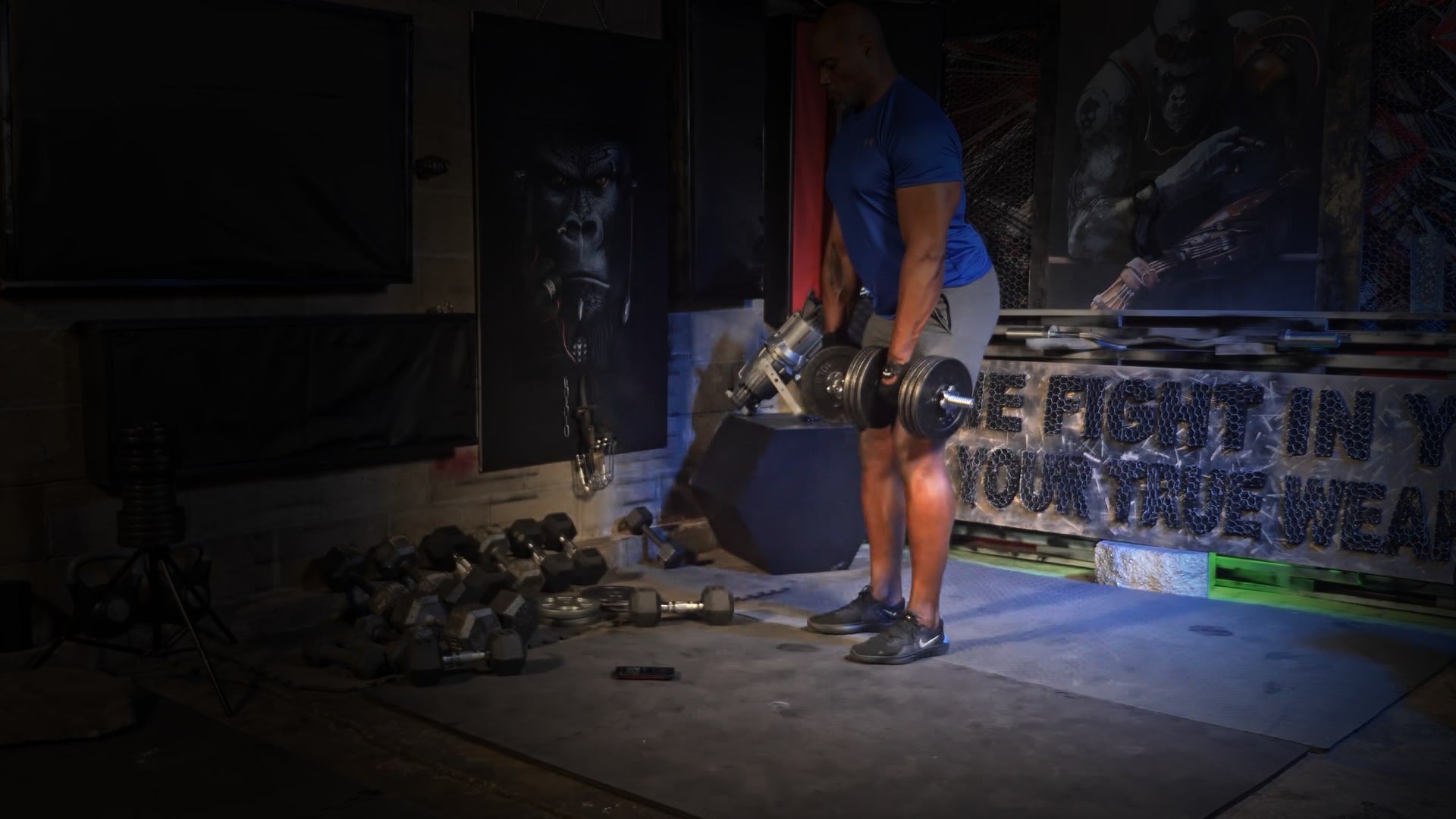 Position 1
Position 1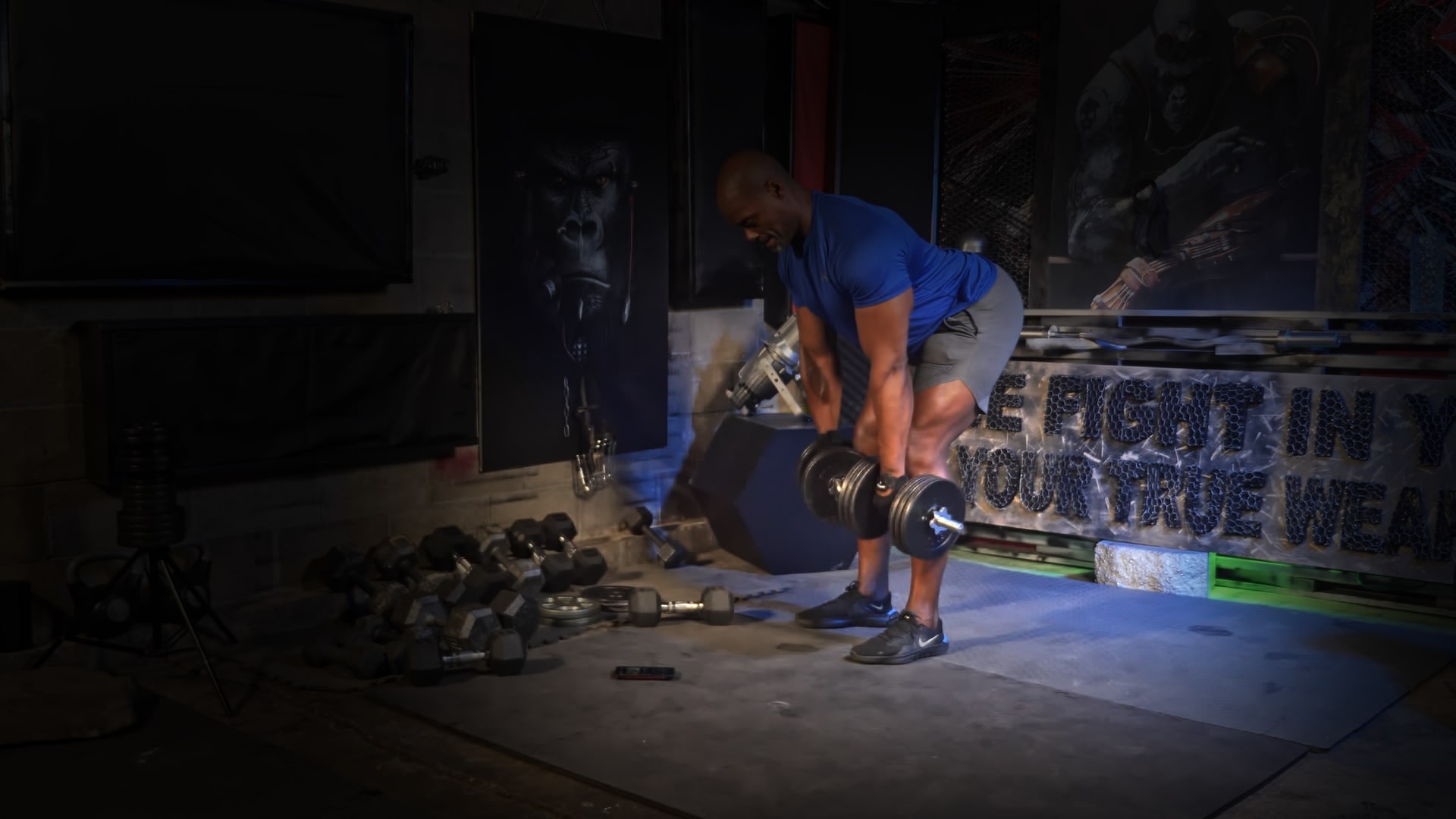 Position 2
Position 2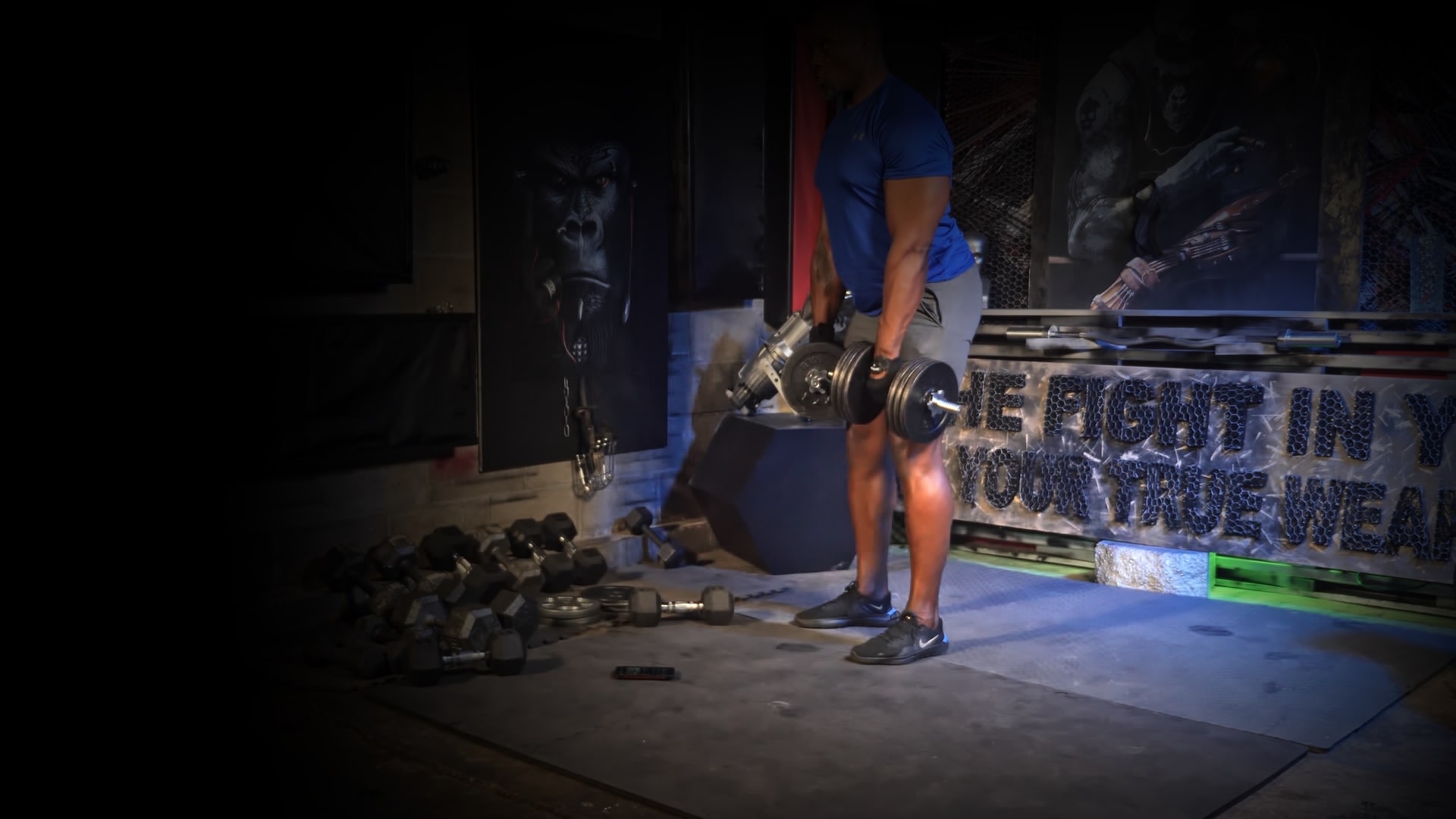 Position 3
Position 3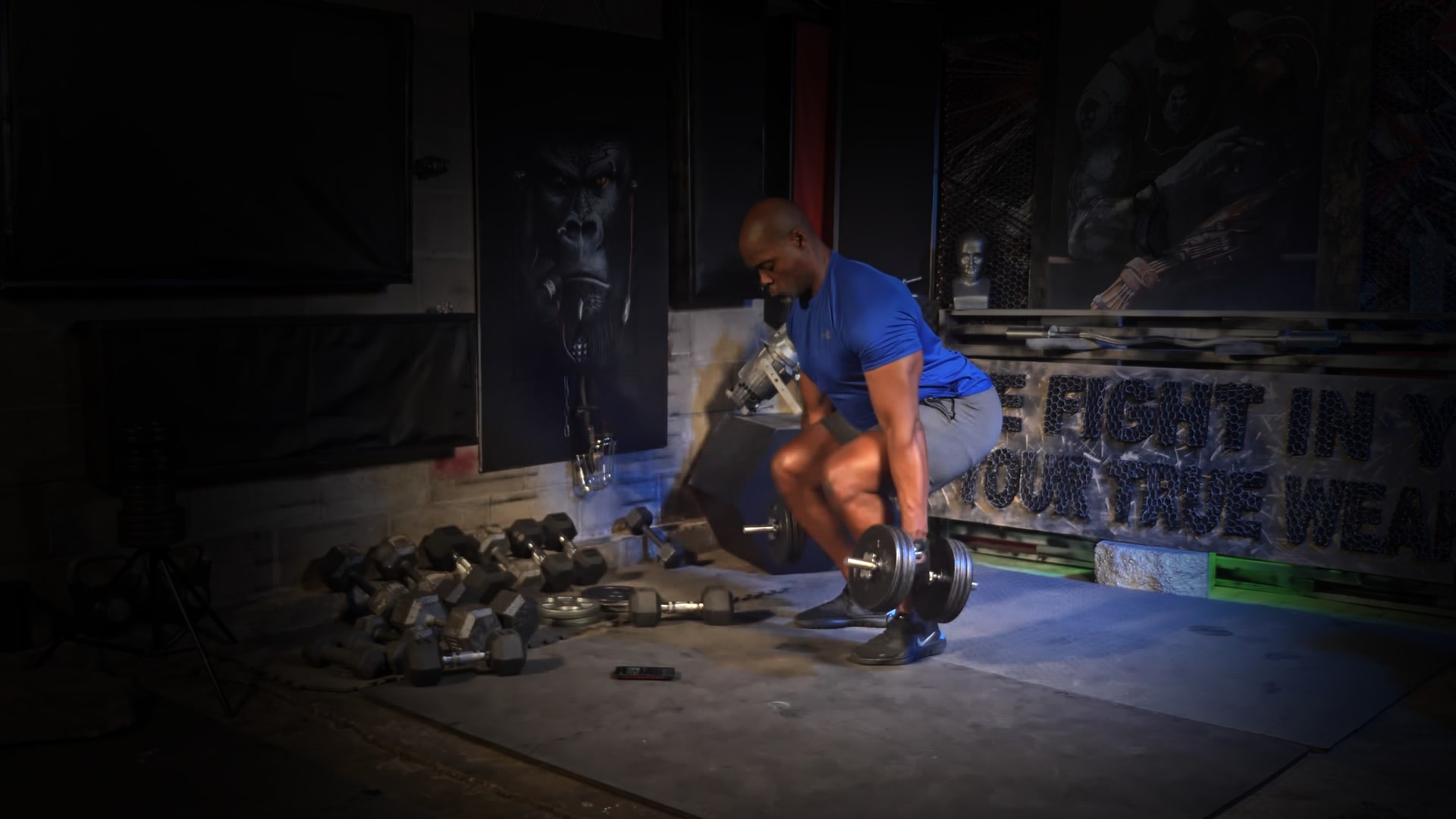 Position 4
Position 4 Position 5
Position 5Items Needed: One pair of dumbbells.
Cue 1: Have a dumbbell in each hand using a pronated grip, and stand with your feet set shoulder-width apart. Rest the dumbbells on the outer thigh of each leg.
Cue 2: Place your bodyweight so that it is over your heels and bend slightly at the knees. Maintain this position throughout the exercise.
Cue 3: Maintain a flat back with the spine in a neutral position. Ensure that you keep a high chest and then engage your core as well as your glutes and hamstrings. Retract your shoulders so that you can feel each dumbbell pulling down on your Lat muscles. This will help to keep the weight resting on each leg and stop the lower back from rounding.
Cue 4: To fully activate the muscles in the back of each leg, maintain a slight knee bend. Hinge at the hips by pushing your ass back instead of going down as you would do with a deadlift. Lower each dumbbell until it is level with your shins.
Cue 5: Drive your hips forward and up to the top without extending and locking the knees. Squeeze your Glutes like they owe you money.
Cue 6: Bring each dumbbell to your side as you keep your upper body upright with your core engaged.
Cue 7: With chest high, slowly lower into a Dumbbell Squat until your knees are at or just below the 90-degree angle to the floor.
Cue 8: Pause briefly in the Squat position and then drive out of the Squat and back into the standing position.
You have now completed your first In-Set Superset repetition.
Cue 9: Ensure you have a slight bend in the knee before attempting your next rdl repetition.
You can also use the RDL with Bent over Rows, Shrugs, and Dumbbell Curtsy.
For The Health & Fitness of All Athletes:
For the health, safety, and the longevity of all athletes, take the time to warm up all muscle groups and the lower back before any strength or fitness work. Add Knee strength movements to help build the muscle and tendons around the knee cap.
We hope you found this DB RDL article helpful. Include these RDL exercises to your workout program to grow and improve your lower body.
Building With Dumbbells :
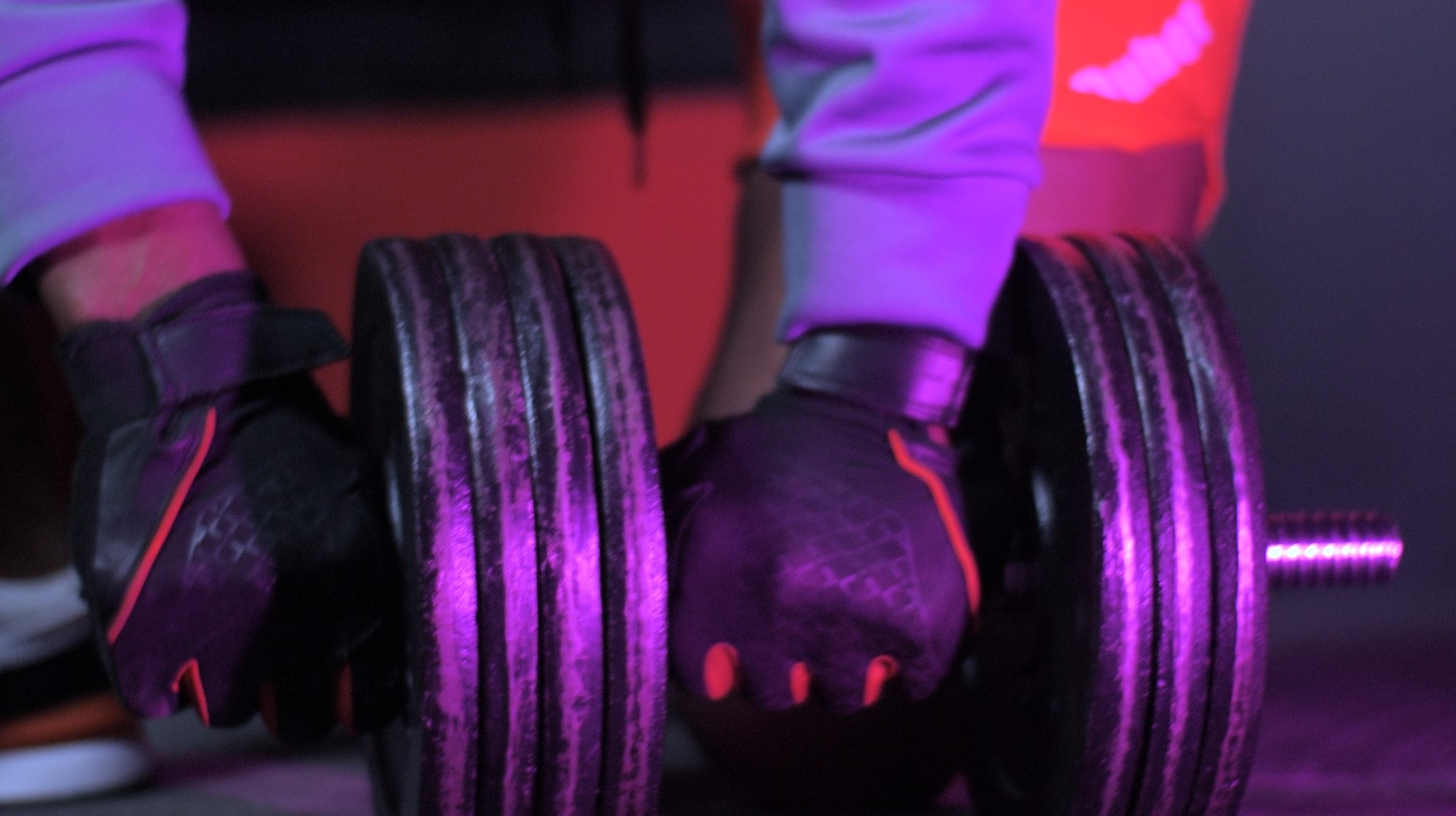
Chest Supported Rear Delt Row: A Rear Delt Dumbbell Exercise For Mass
Dumbbell Push Press: Get More Overhead Push Press Power
Dumbbell Squats: 4 Unusual Variations To Beef Up Your Quads & Strengthen Your Knees
Dumbbell Deadlift: Build Muscle With Dumbbells & These 5 Variations
Leaning Lateral Raise - A Great Way To Cap off The Deltoids
Mission Jacked L.L.C
Address: 9407 NE Vancouver Mall Dr
STE 104 #1269
Vancouver, WA 98662 USA
Email: mission@missionjacked.com
